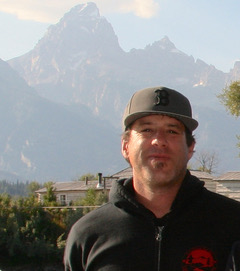Current Trends in the U.S. Wildland Fire Management System - Are They Keeping Pace?
January 2023
Words unspoken are more impactful than those voiced.
Comments, commitments, and ideas from the 5th Cohesive Strategy Workshop in Asheville, North Carolina 2022
By Jonathan Bruno, CEO, COCO
Recently, I had the opportunity to sit on a panel for the Current Trends in US Wildland Fire Management System, hosted at the fifth Cohesive Strategy Workshop in Asheville, North Carolina. It was an honor to sit with current and former national fire leadership; however, it was apparent to me and some others in the audience, that more could have and should have been said. If you attended, saw my five pages of notes, and heard my one-minute response to the following questions, these answers are for you. If you did not attend but are interested in learning how we can enhance the U.S Fire management system, please read on. I will be honest, after the panel I was frustrated and had hoped to say more. To hear more. I had several people come up and ask why the tribal representative, Jim Durglo, and I did not get to speak more. My response was simple. We simply did not have the time and did not get the opportunity. I do believe, though, that the words left unsaid may have been more impactful than what was. These comments come from over thirty years of experience as a responder, a mitigation professional, and a nonprofit leader.
Is the existing fire management system meeting the current and future needs? If not, why not?
On the suppression side of the equation, we have created a monster. In Colorado, for example, nationally large, complex, large-duration, campaign fires are how many departments survive. Apparatus are deployed all summer long. The department depends upon these incidents to fund its in-district activities. Let me be clear, no one wants to see homes, ecosystems, and lives destroyed, but these national fires allow many departments to purchase necessary new equipment and gear. I cannot tell you how many times I have heard that the truck needs to go out and get paid. We’re talking about an inanimate object as if it heads out the door at five with a coffee in hand.
On the pre-fire, risk-reduction, or mitigation side, we have ultimately left most of the responsibility up to individual states and local jurisdictions to fend for themselves, fighting for limited funding. This is not entirely bad, but some higher-level coordination and support could be beneficial.
Do you think the system currently provides the framework and guidance needed to fully implement the National Cohesive Wildland Fire Management Strategy?
No. Today, the Cohesive Strategy focuses on the landscapes and the response component, with little emphasis placed on a fire-adapted communities approach. A fire-adapted communities approach looks at the system in a holistic way and includes, before, during, and after the fire components, partners, and activities. The suppression world, while critically important, is the loudest voice in the room. Too often the voice of the community is left out of the discussion. Recently, I have said that Suppression is too late – Mitigation is the emergency.
You see, the systems are in place for the response, yet we lack a similar infrastructure to develop, support, and train mitigation and post-fire professionals. We need to change this simply because we do not have, nor will we ever have enough resources, to fight the fires of the future. To design programs and projects that work in your unique social, environmental, and political community takes skill, time, tenacity, and commitment. All this takes money.
We need to commit to the development of a mitigation-focused system, where training, investments, careers, and professional pathways are developed. We need to not just teach people how to put out fires, but teach people (through formal higher education and accredited training programs) how to prepare for the fires that will come. We need real investments, not reimbursement-based grants. We have far too long been fighting to get the scraps tossed from the trucks as they roll out of town after the parade.
Remember early when I referenced that fire adaptation includes all the elements of the cohesive strategy? I bring this up because I believe there is limited cross-walking occurring between the individuals and entities that work within their specific areas (fire-adapted communities, fire response, health landscapes). This, in my opinion, is not because the strategy does not implicitly state to work together, but rather because we have not framed the issue and solution in a cohesive way. I recommend that we redefine our understanding of fire-adapted communities so that this becomes more of an overarching concept or umbrella. It becomes the verb, not the noun. That is to say, that fire adaptation and the concept of fire-adapted communities are already inclusive of the landscapes and how we manage them, it includes how we work together with businesses, response, residents, agencies, and organizations. The concept of a fire-adapted place includes response as well. If we begin to look through this lens, I believe we will start to see the interconnectedness of all our NCS (National Cohesive Strategy) work and move from an end state to an ongoing iterative process.
What components are necessary for today’s and tomorrow’s wildland fire management system to be successful and implement the National Cohesive Strategy? (Looking for strategic alignment, programmatic alignment, communication, collaboration, and implementation of a balanced program).
There needs to be new pathways, careers, and jobs created. Currently, fire professional development and career paths lack a substantial investment in the activities our communities, politicians, and leaders are demanding. Non-responders and responders are being asked to lead community risk reduction efforts, write or develop Community Wildfire Protection Plans, participate in community organizations, complete home assessments, feed chippers, manage biomass, and sell timber. However, the training programs, career advancements, on-the-job training, job aids, and funding are so limited. We do not just need sawyers, and people to drag torches and feed chippers – we need individuals who can lead, facilitate, coordinate, design, and plan. We need nonprofit leaders, fire department mitigation leaders, private sector partners, and engaged citizens to coalesce and get to work. To do this, we need to create high-quality, sustainable, good-paying jobs, based in communities at-risk; we need to invest in crosswalk training. On the response side, we need responders to learn from mitigation professionals and have the Incident Commanders and line staff work together with fire safe councils, and work with place-based collaborative organizations that know a place and have the trust of a community.
What are the barriers to system improvement? Why have we not been able to make large-scale improvements?
First, a misunderstanding of the difference between prevention and mitigation. We always talk about using the same language and speaking with a common purpose. Let’s start right now.
- Prevention focuses on reducing the incidence of human-caused fires through public education, rules and regulations, and law enforcement.
- Mitigation work focuses on modifying the environment or human behavior to reduce potential adverse impacts from a natural hazard.
Second, the current system values suppression as if it is the only savior. Suppression must be considered the last resort.
 Third, the voices making decisions at the top have not changed. We need to make space for new voices, new partners, and innovators. Make room for others. Policies and regulations are often written behind closed doors, with only the highest level of input – this needs to change.
Third, the voices making decisions at the top have not changed. We need to make space for new voices, new partners, and innovators. Make room for others. Policies and regulations are often written behind closed doors, with only the highest level of input – this needs to change.
Fourth, we have to reframe the conversation and ask hard questions. We are trying to plug the Cohesive Strategy into a fire-centric system. We ask fire departments to take the lead on mitigation programs, but I think this can be misguided. Why would we hand over the responsibility of mitigation to organizations that are already overworked, underfunded, and often away working on fires outside of the district? Can we not make space for other actors in the sector? Remember, fire response is command and control. Try that when working with an 80-year-old-timer (older than the tree in the front yard you ask them to remove) in the mitigation context.
Consistent with the Cohesive Strategy Workshop Theme, “Keeping Pace with Reality: Boldly Embracing the Challenges and Undertaking the Hard Work,” what do you offer to the existing and future fire management system? Looking for BOLD ACTIONS from panelists at their current levels – solutions and/or recommendations that they will get behind and take/facilitate that address what they’ve elevated as issues today.
I am committed to building the mitigation workforce. I am committing to supporting the development of the mitigation infrastructure fully. My organization, COCO will continue to push for the development of mitigation professionals. COCO will help whenever asked and we will call out the misguided efforts of leaders, politicians, and others if the efforts are not going to change the trajectory.

COCO will not take 30% overhead to do this, we get as much funding for the ground efforts as possible. COCO will further commit to raising your voices from the ground and developing the tools and resources you ask. I am further committed to supporting the development of the Post-fire Navigators and Roadmap concept by taking our successful experiences developing the Community Mitigation Assistance Team, and Community Wildfire Mitigation Best Practices Training to develop tools, training, and subject matter experts better prepared for the aftermath of the fire.
Furthermore, I believe we need to better coordinate efforts outside of the federal system. What I mean is that we need to develop a group or partnership similar to that of the Wildfire Leadership Council that brings together the partners and provides strategic recommendations to help ensure policy coordination, accountability, and effective implementation of fire adaptation-related long-term strategies through a collaborative environment to help ensure effective and efficient wildfire management, promote fire-adapted communities and create resilient landscapes to achieve long-range benefits for society and nature. We need to do this immediately. I propose we create the Fire Adapted Communities Leadership Council.
As I hope you can see, I had more to say than could have ever been voiced in a two-hour discussion with just myself on stage. The frustration I felt after was short-lived. Because I said what I did, my voice was included among the fire leadership, I believe the community mitigation professional will now, and into the future, have a seat at the table. I am excited about the future, and I am optimistic and hopeful; however, hope and optimism are not a plan. I will leave you with this statement,

If you are interested in joining in the development of the mitigation infrastructure, teaching mitigation, learning more, leading better, developing the Fire Adapted Communities Leadership Council, running a saw, feeding a chipper, carrying a torch, developing policy, and serving, then give me a call. We can put you to work.
Happy New Year from the COCO family to yours, Jonathan Bruno
Jonathan Bruno
CEO, Coalitions and Collaboratives, Inc. | 719-433-6775 | Jonathan.bruno@co-co.org
